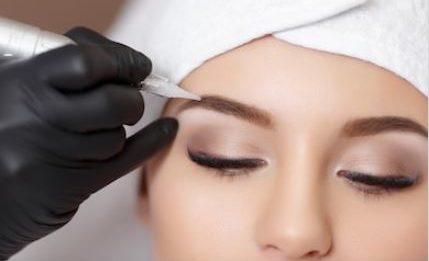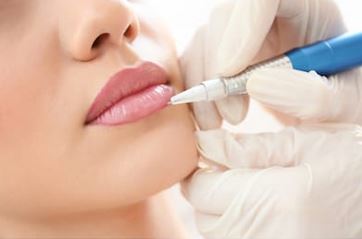Summary of advice for Micropigmentation (Semi Permanent Make-Up)
Micropigmentation treatments can range from the very subtle to the dramatic, depending on what the client is looking for. A general rule is the more dramatic, the longer it will last. The most frequently requested procedures are explained below.
Eyebrows
Eyebrows are the frames of the face. When sets of brows are designed correctly they can lift the eyes and give a more youthful appearance to the face. Clients with sparse eyebrows can have them corrected, and they can be totally reconstructed for those will total hair loss such as Alopecia. Advanced techniques for eyebrow reconstruction include the art and skill of replicating real hair.
Lipliner
Lips can be defined to emphasise or correct an irregular lip shape, or to add colour to lips that have lost definition. Advanced techniques for lips include colour blending and full lip tint.
Eyeliner
Eyeliner or Eyelash Enhancement is used to add depth and definition to the eyes. Colour and thickness is individual. Advanced techniques for eyes include shaded eyeliner.
Please take into account that although the pigment does fade over time, it may never completely disappear. If you are really unhappy with the results, laser treatment may be required to remove the pigment permanently.
How long will it take to recover from Micropigmentation?
No recovery time is necessary, however treated areas will appear a little dark for a few days and subsequently exfoliate and lighten to a more natural looking shade, the second visit will be necessary to perfect the
shape and deepen the colour. In some instances, on delicate skin there may be swelling and or slight bruising, however you can return to work and normal activities
immediately after a treatment. What should you do after a Micropigmentation treatment? It is very important that you follow the advice of your practitioner carefully after micropigmentation to reduce the risk of complications.
Post-treatment advice includes:
– Avoid direct sunlight on the treated area.
– Avoid wearing contact lenses for a few days if treated around the eyes.
– Avoid swimming for several weeks.
– Do not pick peeling or any flaking skin.
– Avoid wearing conventional make-up on the treated area(s) for 3 – 5 days.
– Apply Vaseline (petroleum jelly) to form a barrier for 3 – 5 days post procedure.
What are the risks and potential complications from Micropigmentation treatment?
Permanent cosmetic procedures are of a skin invasive nature (as they are a form of cosmetic tattoo) and therefore you may experience some discomfort. This may vary according to each individual’s pain threshold and the skills of the technician performing the service.
However, keep inmind that there are different methods available to help with painmanagement, including various topical anaesthetics. Your skin should return to normal relatively quickly as any side effects such as swelling or redness is generally mild.
Allergic reactions to permanent cosmetics are quite rare. You may request a skin sensitivity test in an invisible area beforehand to see how your skin responds. Some technicians routinely recommend a sensitivity test as part of the treatment.
Needles inserted too deeply in the skin can cause bleeding, spreading of pigments, and damage to hair follicles.
Scarring is very rare, and usually because of an error by the practitioner performing the treatment. If proper hygiene and sterilisation guidelines are followed, micropigmentation should be very safe with few risks.
It is advisable not to pick or rub the treated areas to minimise the risk of infection.





